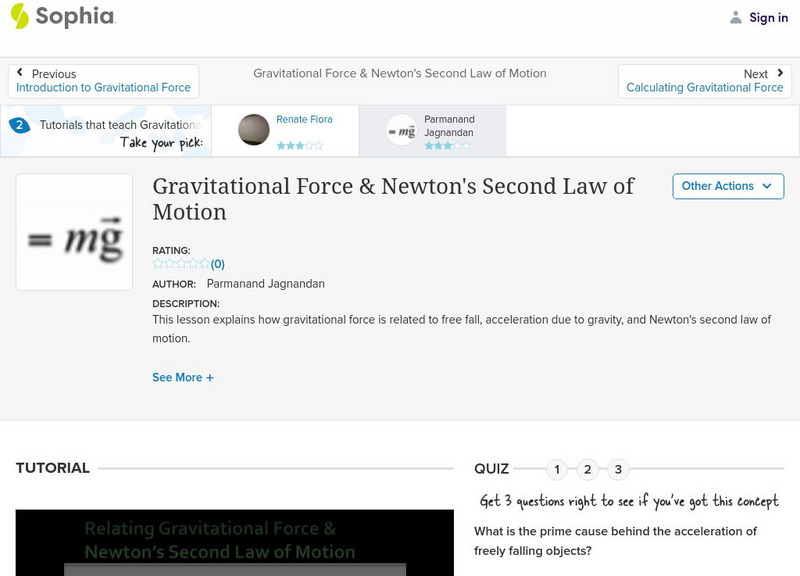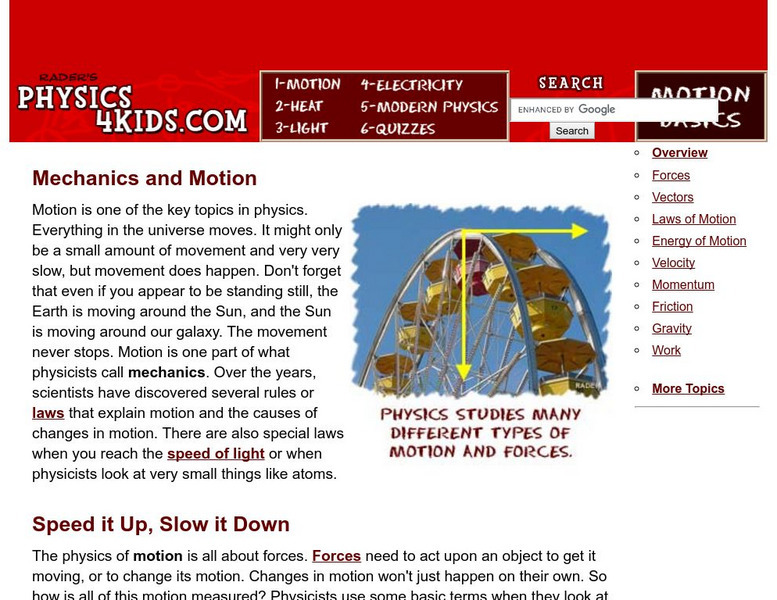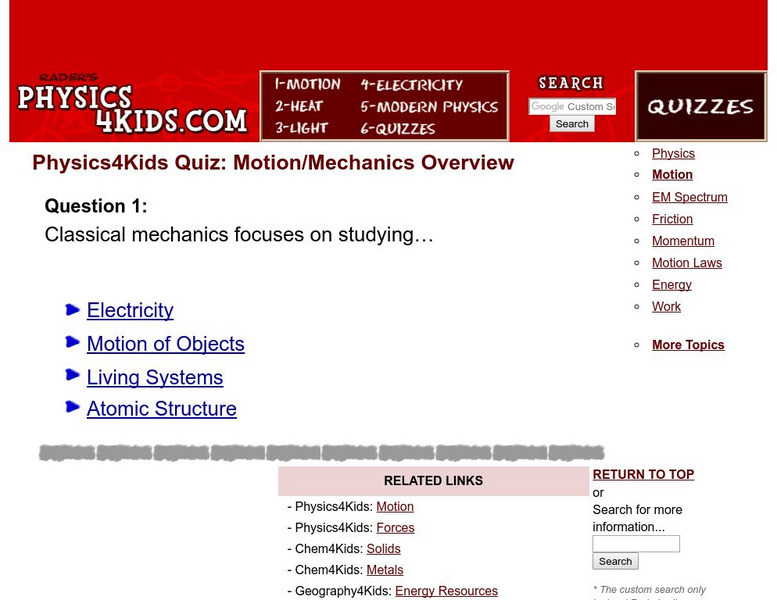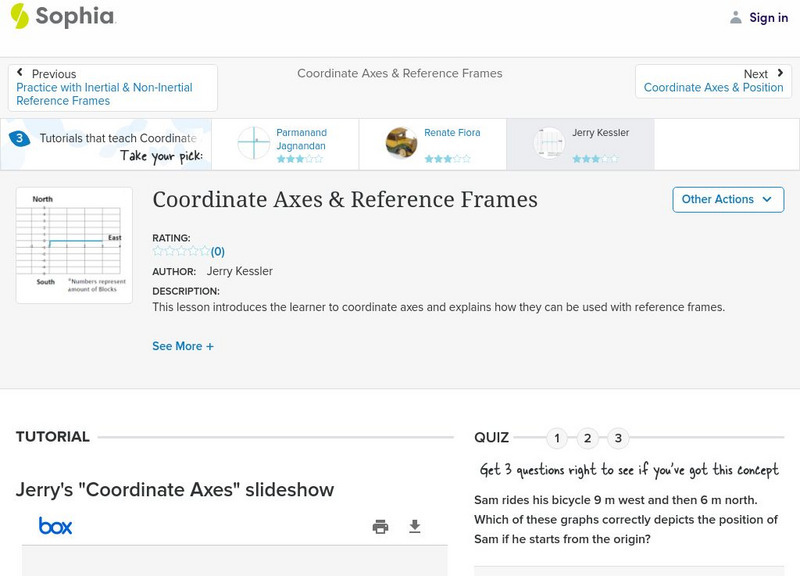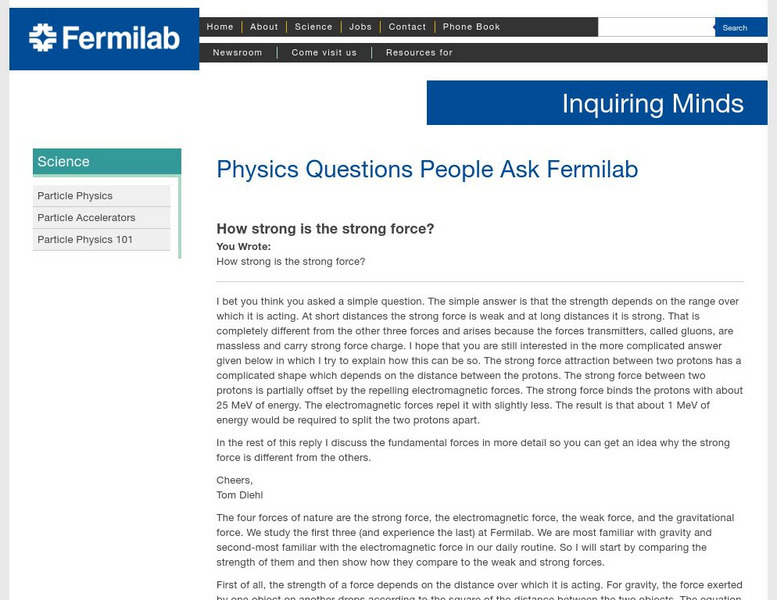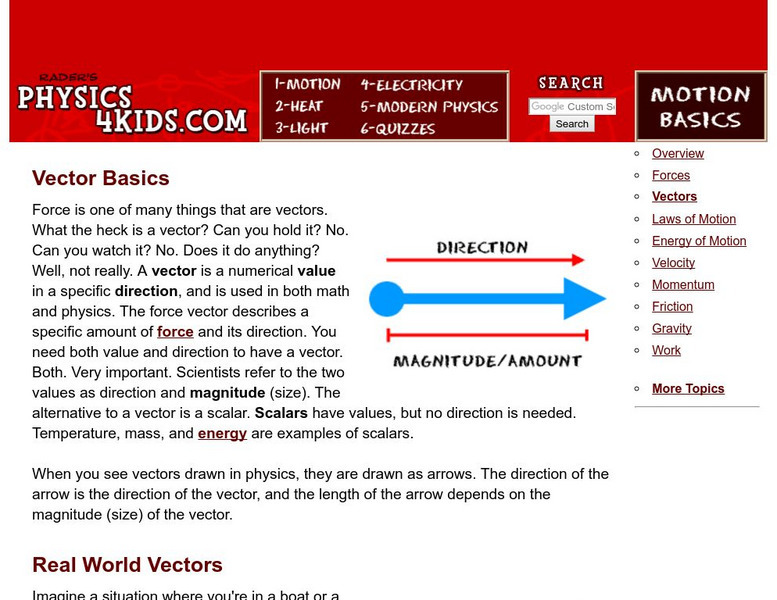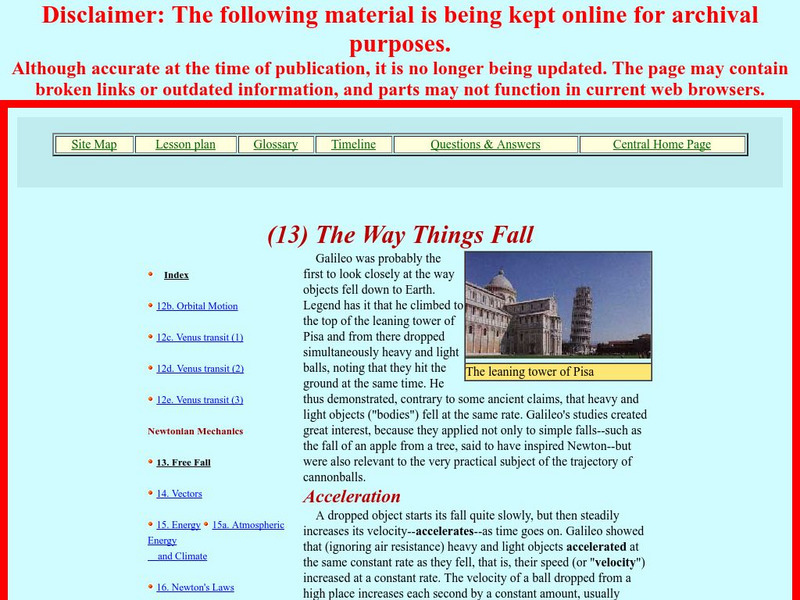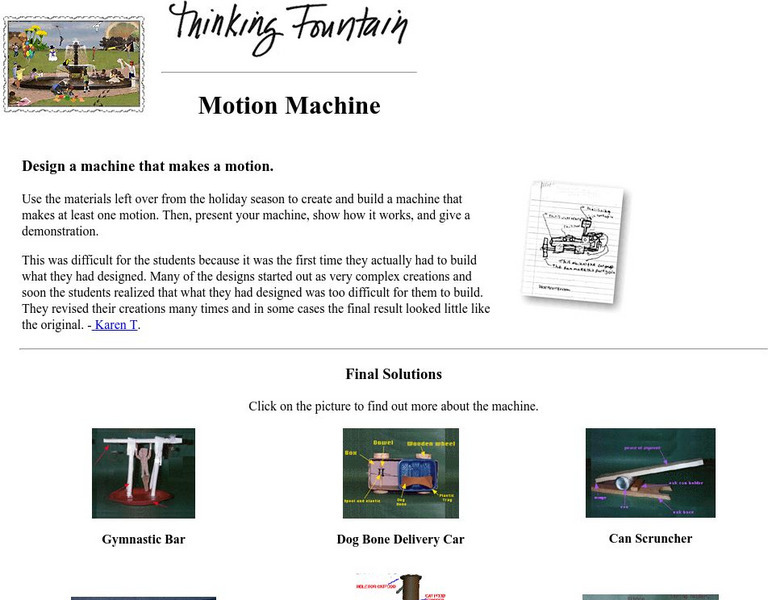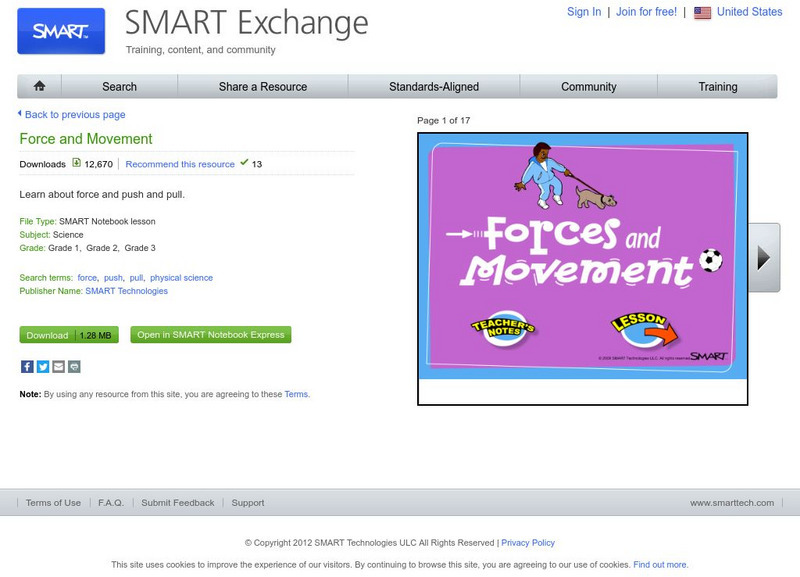Hi, what do you want to do?
Middle School Science
Middle School Science: Balloon Powered Race Cars
An idea developed by a physical science teacher who applied Newton's Laws of Motion in creating a balloon powered race car. Find simple objective, materials, rules, and procedures.
Sophia Learning
Sophia: Gravitational Force & Newton's Second Law of Motion
This lesson explains how gravitational force is related to free fall, acceleration due to gravity, and Newton's second law of motion.
Sophia Learning
Sophia: Introduction to a System: Lesson 2
This lesson introduces the concept a systems and explains why it is important to properly define a system. It is 2 of 2 in the series titled "Introduction to a System."
Sophia Learning
Sophia: Introduction to a System: Lesson 1
This lesson introduces the concept a systems and explains why it is important to properly define a system. It is 1 of 2 in the series titled "Introduction to a System."
Physics4kids
Physics 4 Kids: Mechanics and Motion
Motion is one of the key topics in physics. Everything in the universe moves. It might only be a small amount of movement and very very slow, but movement does happen. Don't forget that even if you appear to be standing still, the Earth...
Physics4kids
Physics 4 Kids: Motion/mechanics Overview Quiz
Take this ten question multiple choice quiz on motion and mechanics.
Sophia Learning
Sophia: Coordinate Axes & Reference Frames: Lesson 3
This lesson introduces the learner to coordinate axes and explains how they can be used with reference frames. It is 3 of 3 in the series titled "Coordinate Axes & Reference Frames."
Other
Fermi Laboratory:how Strong Is the Strong Force?
Use this site to learn about the four forces of nature. Also learn what determines the strength of a force. This question and answer site is a link of the Fermi National Accelerator Laboratory.
Learn AP Physics
Learn Ap Physics: Physics B: Kinematics
A site dedicated to help students prepare for the AP Physics B test. This specific site reviews kinematics including one and two dimensional motion and vectors. Site contains links to video lectures and practice problems.
University of St. Andrews (UK)
University of St. Andrews: Isaac Newton (1643 1727)
This life of Isaac Newton' traces his life from birth through childhood to his rise as a renown scientist and mathematician.
ClassFlow
Class Flow: Balance and Motion: Push and Pull
[Free Registration/Login Required] Students will learn what balance, force, push and pull are. There are video clips and interactive practice of these vocabulary words and concepts.
ClassFlow
Class Flow: Forces in Action
[Free Registration/Login Required] This flipchart explains weight and gravity and engages students in activities using force and motion.
ClassFlow
Class Flow: Forces in Motion
[Free Registration/Login Required] This lesson explores forces, and how they react to the world around us. It also discusses Newton's Laws of Science.
ClassFlow
Class Flow: Motion
[Free Registration/Login Required] This flipchart describes what motion is and what causes an object to move. Streamline videos, activities, and assessment are included.
Exploratorium
Exploratorium: Snacks
Exploratorium's snacks aren't edible, but they are good! Use your science skills to discover gravity, learn about biology, do fun experiments.
BBC
Bbc Schools: Ks2 Bitesize: Science: Physical Processes: Friction
Easy-to-understand explanation of friction and air resistance, with a supplemental activity and quiz questions.
ClassFlow
Class Flow: Forces: Motion
[Free Registration/Login Required] Students will demonstrate the relationship between the application of a force and the resulting change in position and motion on an object.
NASA
Nasa: The Way Things Fall
This site from NASA compares free falling motion to falling with air resistance. Discusses Galileo's experiment. Explains why we believe all objects free fall with the same acceleration.
Annenberg Foundation
Annenberg Learner: Amusement Park Physics: The Principles of Free Fall
An article describing free fall principles in roller coaster rides. In addition to the explanation of free fall, an experiment is described that allows you to test free fall with a cup of water. Part of a larger presentation on roller...
Science Museum of Minnesota
Science Museum of Minnesota: Motion Machine
A lesson in which students design a machine that makes motion.
Other
Fear of Physics: Roller Coaster
Use animation and other interactive strategies to help understand physics principles. Change the track and height to see if your ball can make it to the end.
Center of Science and Industry
Cosi Columbus: Boomerang
Students will make and fly boomerangs and discover that their spinning action is what makes them return to the thrower. Includes full list of materials, procedures, and scientific explanation of "gyroscopic precession".
SMART Technologies
Smart: Force and Movement
Learn how pushes and pulls relate to theconcept of force and motion.






